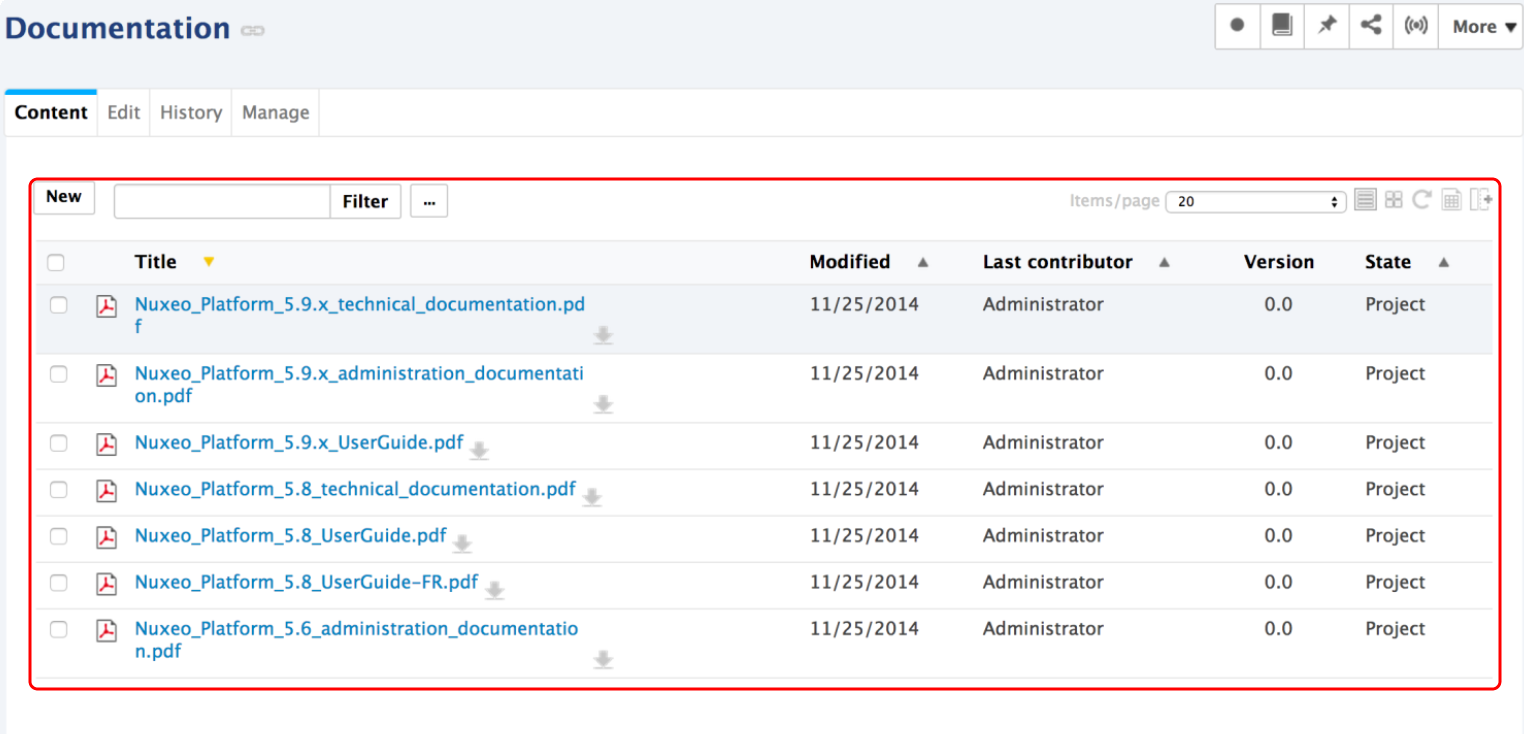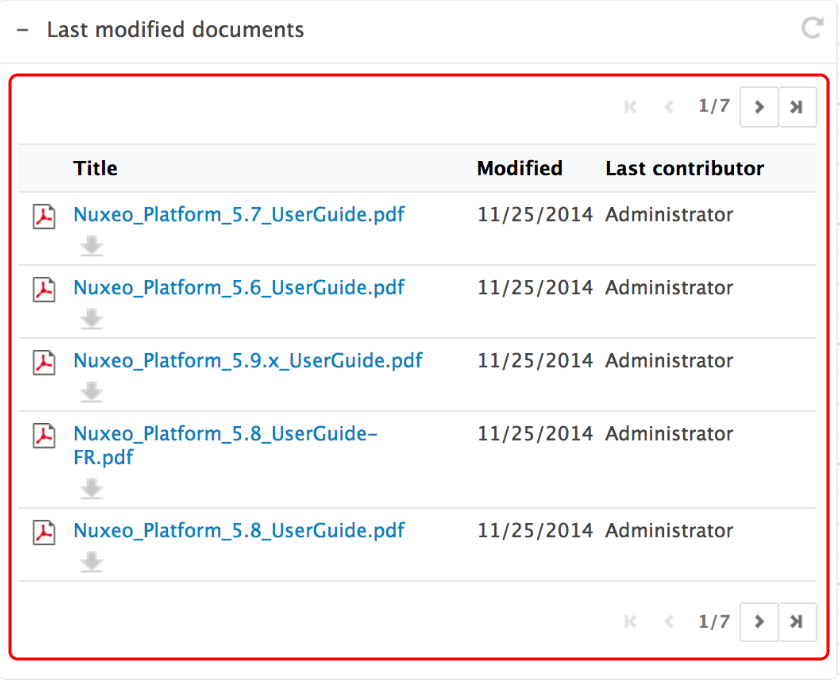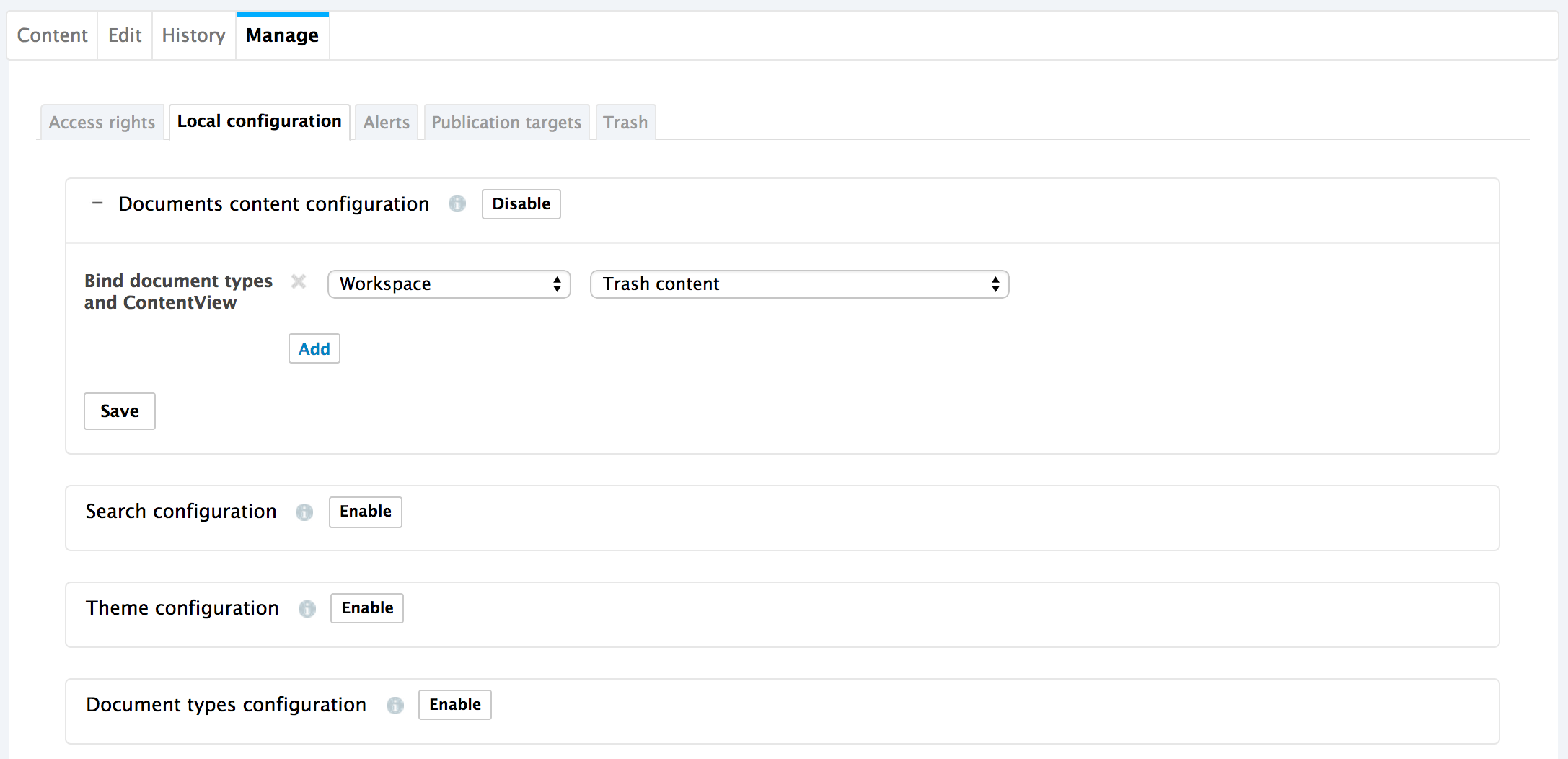From the "Local configuration" sub-tab of the Manage tab, you can set preferences on what content can be created in the current space, how the lists of content should be presented, customized search features...
The Nuxeo Platform uses different presentations for the lists of documents: they can have different layouts, display specific informations on the documents, have a different default number of documents on a page, enable some features on the documents, etc. These predefined presentations of lists of documents are called "Content views". Here are some examples of content views used in Nuxeo:
- Document content (used for workspaces and sections for instance):


- trash content view:


- Last modified documents:


You can define what content view will be used for folderish documents (i.e. documents in which you can create other documents) in the current space. This is inherited in the folderish documents of the space from which you define these preferences.
You can leverage this feature when you customize the Nuxeo Platform and create new content views. Your content view will then be available in the drop down list and you can use locally for documents. You can read How to define a new view using Studio.
To associate a document type and a content view:
- Click on the Manage tab of the current space.
- Click on the Local configuration sub-tab.
- If needed, click on the Enable link of the "Documents content configuration". The document content configuration form is displayed.
- Click on the Add link to define a new document type - content view association.
- In the first drop down list, select the document type.
- In the second drop down list, select which content view will be used for the selected document type.


- Click on the Save button. The selected document type now has the presentation defined by the selected content view, in the current space and its sub-spaces.
To remove a document type - Content view association
- Click on the Manage tab of the current space.
- Click on the Local configuration sub-tab. The available local configurations are displayed.
- In the Document content configuration, click on the icon
 of the document type - content view association you want to remove.
of the document type - content view association you want to remove. - Click on the Save button. The document type has its default content view.